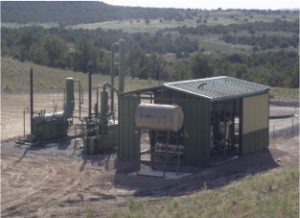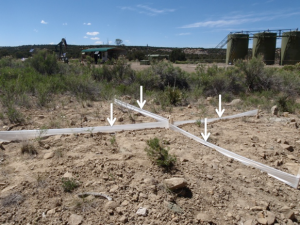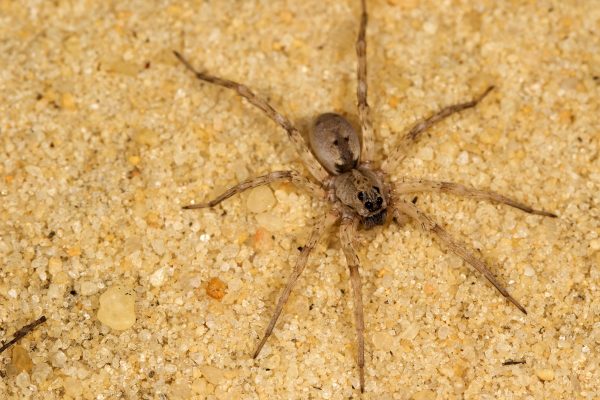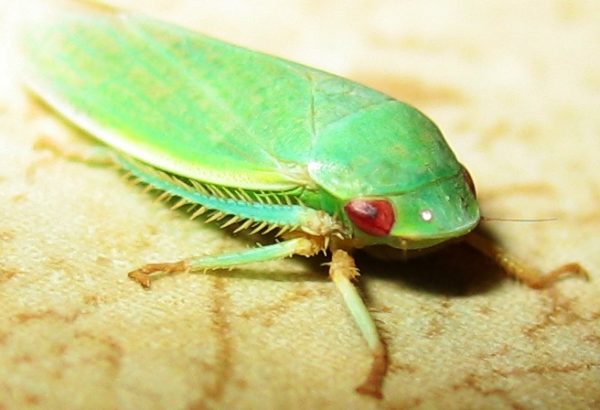The relentless roar of natural gas compressors influences the numbers of insects and spiders nearby, triggering decreases in many types of arthropods sensitive to sounds and vibrations, a collaborative Florida Museum of Natural History study shows.
Populations of grasshoppers, froghoppers, velvet ants, wolf spiders and cave, camel and spider crickets dropped significantly in areas near gas compressors, while leafhopper numbers rose.

Photo by Jessie Bunkley
These shifts in arthropod communities could set off a cascade of larger-scale ecological consequences, as insects and spiders play fundamental roles in food webs, pollination, decomposition and overall ecological health, said study co-author Akito Kawahara, assistant professor and curator at the museum’s McGuire Center for Lepidoptera and Biodiversity at the University of Florida.
“Noise pollution affects all kinds of animals, and insects are no exception,” Kawahara said. “They might be small, but they’re the dominant animals on the planet in terms of numbers. What happens to them affects whole ecosystems.”
The study joins a growing body of research on how artificial noise alters animal behavior and disrupts ecosystems and is the first to examine noise pollution’s effects on arthropod distribution and community diversity.
Gas compressors, which can range from minivan- to warehouse-sized, extract and move natural gas along a pipeline, emitting intense, low-frequency noise. Previous studies have shown noise pollution from compressors changes the activity levels and distribution of bats and birds, key predators of insects and spiders.
Gas compressors, like this one in the San Juan Basin, produce constant, low-frequency noise. Video courtesy of Jessie Bunkley
Kawahara joined a multi-institutional research group, led by the study’s first author Jessie Bunkley and principal investigator Jesse Barber of Boise State University, to test how the landscape-scale noise produced by gas compressors affects arthropod communities, many of which rely on sound and vibrations to find food, meet a mate, communicate and detect predators.

Photo by Jessie Bunckley
The research team used pitfall traps to take a census of spider and non-flying insect populations at San Juan Basin, New Mexico, the second-largest natural gas field in the U.S. The team tested five sites with compressors and five ecologically similar sites without compressors and compared the relative abundance of specimens.
Compressor sites had 95 percent fewer cave, camel and spider crickets, 52 percent fewer froghoppers and 24 percent fewer grasshoppers than sites without compressors. For every 10-decibel increase in noise, velvet ant populations dropped 56 percent and wolf spiders decreased by 44 percent. Unexpectedly, leafhopper numbers surged in response to noise, increasing 44 percent for each additional 10 decibels of sound.
Some arthropods, such as jumping spiders, ground spiders, ants and leaf beetles, showed no significant differences in their numbers between sites.

Florida Museum photo by Lary Reeves
All arthropod groups that responded to louder background sound levels or compressor noise make or sense sounds or vibrations, suggesting compressor noise could directly interfere with or mask important information they receive or exchange.
Compressor noise could negatively affect wolf spiders, for example, because they are hunters that depend on vibrations to detect prey. Conversely, noise could act as a “predator shield” for leafhoppers, hiding their sounds and movements from their natural enemies.
But parsing out why a particular group of arthropods increased or decreased in response to compressor noise is difficult, Kawahara said. While the number of crickets in the Rhaphidophoridae family plunged in response to compressor noise, crickets in the Gryllidae family did not seem to be affected.

Public domain image by Rankin 1958
“The range of changes in arthropod abundance sheds light on the fact that we’re dealing with a very complicated network of animal interactions,” Kawahara said.
He pointed to the value of museum collections as archives of past biodiversity that can record changes to the environment over time.
“We are rapidly changing our environment in terms of sound, light, air and climate,” he said. “Unless we have historical documentation of what was in an area at a particular time, it’s hard to detect these changes at a fine scale. Museum specimens document biodiversity over hundreds of years, offering those snapshots of time.”
The study was published in Ecology and Evolution and is available at http://dx.doi.org/10.1002/ece3.2698. Funding from Bat Conservation International and the National Science Foundation helped support the research.
Learn more about the Kawahara Lab at the Florida Museum.